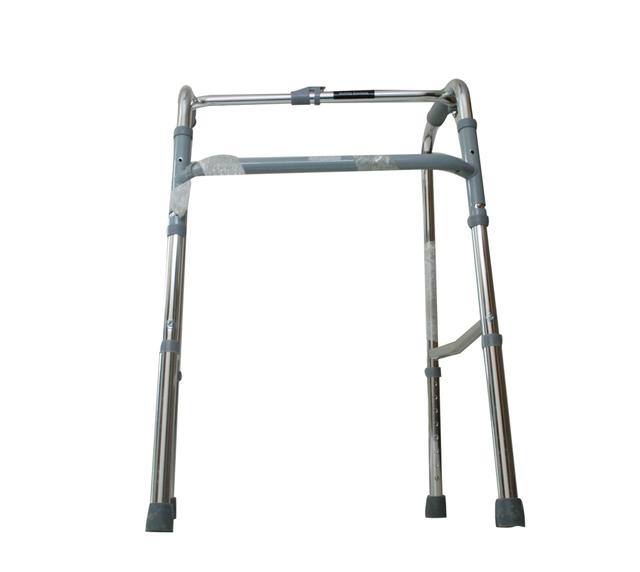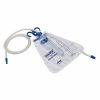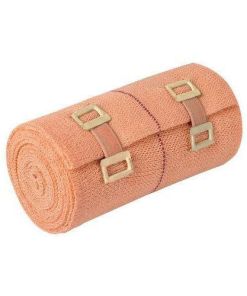Do you sometimes find it difficult to take a few steps without running out of breath or getting a little too tired? Are you losing your balance every time you walk for less than a few minutes?
Worry not! All this will be a thing of the past because we’ve got the right solution for your seemingly never-ending bouts of fatigue!
Did you know you could get a forever companion for yourself to help you move? I said forever, yes. This companion won’t abandon you because it doesn’t provide any leeway for emotions to get hold of it.
So yes, I’ll quit playing around. I’m talking about a walker, obviously! Ever heard of it?
What is a walker?
A walker is an equipment that aids mobility and ensures that you can walk without losing your balance. Such an additional support is needed for people who are plagued by stability issues. So it’s basically a tool that helps in building your endurance level. Sounds cool right? All you have to do is let it tag along with you everywhere!
Aids in varied colours, sizes and shapes can be found. Your present level of mobility should be analysed to make it simpler for you to buy the perfect and customised walker for yourself.
Types of Walkers & their Features
Standard Walkers :
- It is height adjustable
- It is lightweight and foldable
- The hand-grips are firm and strong
- Its silencers are equipped with an anti-rattle feature
- Both of its sides are independently operated
- Its legs are rubber-tipped to enable better stability
Crutches :
- It is height adjustable and gives a comparatively more customized fit
- It has an orthopaedic handgrip
- It has assured durability and is lighter than wood
- It has a shock-absorbing quality
- Forearm and leg sides can be operated independently
- It is padded in the underarm section and is thus comfortable
- We can fold it smoothly
Knee Walkers :
- It is height adjustable
- Its cushioned design provides maximum comfort
- It is easily manoeuvrable
- It has ergonomically designed hand-grips
- Tool-free height adjustment models are also available
Heavy Duty Walkers :
- It is height adjustable
- Bariatric people can make use of it
- This walker is lightweight
- It is designed for those with neurological conditions
Rolling Walkers :
- They are extremely comfy with a padded and sizeable seat
- The seats are easily adjustable
- This walker is lightweight and foldable
- It is manually operated through either one or both the hands
- It is height-adjustable
- Pressing down on the rear tips are the same as slamming down on the brakes
- It can be stored conveniently and also comes with a compartment under the seat for you to store anything
- It has a backrest with paddings
Cane : There are different types of canes, some of which include:
- Standard cane
- We can fold it into four parts
- It has a replaceable grip
- The handle has an ergonomic design
- A smooth custom foam grip and a wrist strap assures security
- It can stand on its own
- It can be made available in the colour of your choice
- It can be conveniently used to walk on any kind of surface
- Walking stick
- It has an ergonomically designed grip
- It can stand on its own
- Heavy duty cane
- Its grip is coated with vinyl
- An extra-tall model is also available
- It’s specially designed for bariatric people
- Fashion Cane
- These speciality canes have paddings in their handles
- They can be disassembled/deconstructed easily
- It is equipped with a rotatable grip
- Some models have tips that can be attached with an LED
- Folding Cane
- We can fold it into four parts and thus, it can be stored conveniently
- It has a contoured and ergonomic grip
- It can be made available in the colour of your choice
- There are also foldable seat canes which are equipped with sling seats
- Quad Cane
- Comfort is ensured through a cushioned and soft-grip handle
- Extra support is provided through the four-point base and an offset handle.
- It has an effective hand grip that is vinyl
- It also acts as a shock absorber and battles shock impulses
- Some models are available with a rotatable grip
- Orthopaedic derby handles are also available in these canes
Speciality Walkers :
- It is height adjustable (tool-free)
- It can be folded or collapsed for improved convenience
- It comes with a bag where you can store anything
- The wheels of some models are strong and can withstand even a steep ascent
- It is designed for people suffering from neurological problems
- Its unique design makes it hands-free
- It is suitable for people whose fine motor skills are weak as it has a single release folding mechanism
Folding Walkers :
- It is suitable for those who’ve had an injury recently
- It is lightweight
- It’s supposed to be picked up and moved as you walk
- It’s meant to be taken for a short saunter down your neighbourhood area and not for any long journeys
- It is inexpensive with excellent maneuverability
Transport chair
- This is meant for those who cannot travel long distances without getting to sit down for a while, a problem which arises out of long-term mobility issues
- It is foldable
- It provides easy manoeuvrability
Along with these, even two-wheel, three-wheel and four-wheel walkers are available.
Walker accessories like cane holders, rubber grips, accessory hooks, cushion sets, walker tray, walker coasters and stroller handles when combined with walkers, make mobility much easier.
What are the different mobility levels?
- Low mobility level – Are you someone who’d struggle to stand up, let alone walk a few steps? If yes, your mobility level is too low and you’ll need assistance all day long to walk.
- Recommended type: Standard walker or quad cane
- Medium mobility level – Even if you’d be able to take a short walk, do you end up heaving and puffing a little too soon? This means that your mobility level only allows travel for short distances and hence you’ll need a walker most of the time.
- Recommended type: Standard walker, rolling walker or quad cane
- High mobility level – Even if your health level is fine, if you can’t stand for too long without being easily fatigued, you’ll certainly need some sort of assistance once in a while.
- Recommended type: Standard cane, seat cane or a rollator
How do you use a walker?
Correcting your position is of utmost importance while you learn to manoeuvre the walker around. There are certain points to be noted.
- While using a regular walker, care should be taken to ensure that it is firmly rooted fixed on the ground before you start moving.
- You should walk in a way so as to avoid exerting the entire weight of your body on your weaker foot.
- Also, you shouldn’t be maintaining a lot of distance between your foot and where you fix the walker. This will soon become easier as you get habituated to walking with the help of a walker.
For example, in the case of a standard walker,
-> you will have to hold onto the hand-grips and move in between the handles.
-> Following this, you have to lift the walker and fix it in front of you, thus transferring the weight of your entire body to the walker.
-> You can start taking a few steps after this. You’ll just have to make sure that the motion of lifting and walking should be well-synchronised.
Since this is quite a strenuous process, standard walkers are used only for aiding mobility while walking short distances.
How do you choose a walker that suits your needs?
While deciding which walker you’ll be buying, you should be asking yourself a number of questions like:
- What is your height? How much do you weigh?
- Can you lift heavy weights, or maybe moderately heavyweights?
- Is it okay if your walker has wheels?
- Can you depend on your walker for the entirety of your time?
- How frequently do you get tired when you walk?
It’s only after you make a careful analysis of all these requirements that you can arrive at an accurate decision of what type of walker you may need.
If the right size and a customisable fit are found, walkers can be extremely beneficial tools to build and develop a sense of mobility in people. So go and get yourself a faithful companion!











Reviews
There are no reviews yet.